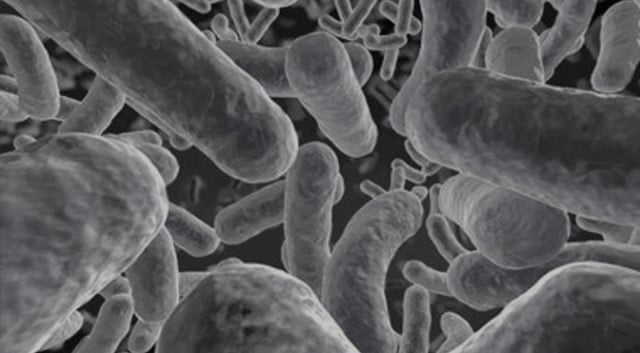Now Reading: Practical Applications of Forensic DNA Fingerprinting
-
01
Practical Applications of Forensic DNA Fingerprinting
Practical Applications of Forensic DNA Fingerprinting
It is almost impossible for a person to commit a crime without leaving behind a trace of his or her DNA. Hair, stains of blood, and even conventional fingerprints contain traces of DNA. The sensitivity and evidential power of DNA Fingerprinting have impacted the way crime scenes are being investigated. DNA fingerprinting also called DNA typing, DNA profiling, genetic fingerprinting, genotyping, or identity testing. The aim of using genetic analysis for forensic casework is to produce a DNA profile that is unique to each individual. DNA fingerprinting offers forensic examiners remarkable opportunities to obtain and present to the court highly relevant evidence from semen specimens in relation to sexual assaults. It is of great use both to forensic investigators and to legal counsel. It has the ability to match a suspect to body fluids found at the scene of the crime. This article points out the practical applications of forensic DNA fingerprinting.
Introduction:
DNA is also known as Deoxyribo Nucleic acid, is a chemical structure that includes a specific sequence of bases called nucleotides which contain the information of all the characteristics of living organisms. DNA has a double helix structure. It is made up of two helical chains or strands. These strands are spirally coiled around a central axis, all along their length. The four nucleotides that make up the sequence of DNA are adenine (A) guanine (G), cytosine (C) and thymine (T). The structure of DNA is same in all individuals, but the only differentiating point is the order of base pairs. The presence of millions of base pairs in an individual’s DNA creates a different sequence that is unique from each other. In the process of identification forensic scientists scan certain regions of DNA that vary from each other and utilizes the data to create a DNA profile of that person. DNA profiling is also known as DNA fingerprinting which is an important forensic technique to identify the suspects and the victims.
History: DNA Fingerprinting is a method which is used to identify individuals on the basis of the molecular characteristics of the DNA. The procedure of DNA fingerprinting, involves comparing samples of human DNA left at a crime scene with DNA obtained from a suspect, which is now considered as the most authentic form of identification by many investigators and scientists. In 1980, Wyman and White discovered the first DNA fingerprinting technique called Restriction fragment length polymorphism (RFLP). In 1985, Jeffrey’s described the first development of multilocus DNA fingerprints and considered that these individual-specific DNA patterns may provide a powerful method for identification of individuals and paternity testing. In 1987, Nakamura coined the term variable number of tandem repeats (VNTR) to describe individual loci where alleles are composed of tandem repeats that vary in the number of core units. In 1985, Kary Mullis developed a technique called polymeric chain reaction (PCR) into forensic work. By allowing the selective amplification of any desired stretch of DNA, PCR helped in low- level DNA detection at scene of crime. Now-a-days most of the forensic genetic methods are based on PCR.
DNA fingerprinting has become standard method in forensic genetics especially in criminal forensic casework such as stain analysis, DNA analysis of hair, individual identification and paternity testing. The potential of DNA fingerprinting has also made possible the resolution of immigration problems. DNA fingerprinting plays a major role in rapid identification of individuals in mass disaster cases. The techniques of DNA fingerprinting aids in the investigation of sexual assault and rape cases. [1]
Applications:
DNA Fingerprinting in wildlife crimes:
Advances in DNA technology in the recent years have altered the investigation of many offences. The utilization of these techniques also has direct application to many wildlife related offences. Examination of non-human DNA can provide a vital proof in wildlife crime investigations. DNA is present in a different types of evidence ranging from blood, bone and feathers to powdered plant material, animal saliva and other transferable traces. After the development of the first human DNA fingerprinting method by Sir Alec Jeffrey’s it was quickly realized that parallel techniques could be applied for other species; such as birds. This led to forensic genetic evidence being used to support a successful prosecution relating to the theft of wild hawks in the UK. [2]
DNA profiling is currently applied to link trace evidence items to victims of wildlife crime in cases of poaching, theft and animal persecution across a wide range of species. Also used to verify family relationships as a part of investigations into the laundering of wild animals through captive breeding programmes. Additionally to the individual identification; DNA profiling techniques may be used to match a sample to its geographic origin. This has numerous possible applications from investigating the illegal timber trade to enforcing fishing regulations.
In sexual offences:
Earlier to the use of DNA fingerprinting, the cases of sexual assaults solved only by the use of circumstantial evidences. In sexual offences as there will be no eyewitness it will be difficult for the victim to prove the offence. The discovery of DNA created a great hope in dealing the cases of sexual offences. Biological evidentiary clues such as semen, saliva and swabs are important in DNA fingerprinting and aids in the identification of suspect. For instance, saliva is found in a variety of offences like murders, scuffles, sexual offences specifically in bitemarks of victim or suspect, on cigarette butts, tea cups etc. usually carry saliva stains. DNA fingerprinting from the semen, swabs and saliva found at the scene of crime helps in arresting the suspects rapidly. The contamination of semen with other body materials such as vaginal fluids, rectal matter in sodomy cases, saliva in cases of oral sex or semen of multiple rapists in gang rapes every culprit can be individualized and identified by the process of DNA fingerprinting. [3]
In Identification of Individuals from skeletal remains:
The chances of analysis of skeletal remains has been of great interest in the field of forensic science, because such remains are frequently preserved for very long periods of time and in cases like mass disasters they are the only source of information available for analysis. The preparation of DNA profiles from skeletal remains can be essential in the personal identification of missing persons and victims of mass disaster cases. The generation of DNA profile from bones and teeth plays an important role in the procedure of identification of unidentified remains cases.
In Disaster victim identification:
Analysis of DNA is one of the most important technique in identification of mass disaster victims. DNA fingerprinting is used to identify victims with their mutilated and fragmented body parts, and also used to identify criminals. DNA fingerprinting used for the first time in disaster victim identification is in the year 1990 i.e., in identification of victims of fire on Scandinavian Star ferry. The identification of victims through DNA analysis is by the collection of ante-mortem and post-mortem samples. Ante-mortem samples such as any personal objects used by victims, buccal swabs, and pathology specimens. Post-mortem samples includes the DNA samples obtained from bones such as femur and metatarsal bones, teeth specifically molar teeth, muscle tissues are also used if body is not in the stage of decomposition. DNA analysis of victims is also done by using Y-STR typing, mtDNA, autosomal STR markers, and Amelogenin markers for the identification of sex of the victims. SNP’s are very useful in the conditions where DNA are samples are degraded [7]. Commercially available kits such as AmpFLSTRw Profiler Plusw ID and COfilerw PCR Amplification Kits, AmpFLSTRw Identifilerw PCR Amplification Kit, the AmpFLSTRw SGMw Plus PCR Amplification Kit (Applied Biosystems, Foster City, CA), and the PowerPlexw 16 System (Promega Corp., Madison, WI) aids with STR typing of mass disaster samples. [8]
In Differentiating Monozygotic Twins:
Differentiation of monozygotic twins is not possible because they have identical autosomal STR profiles. But through recent discovery of extremely rare mutations by ultra-deep next-generation sequencing (NGS) the individualization or differentiation of monozygotic twins is possible. Paternity disputes of monozygotic twins are rare. This technique is very useful if such cases are recorded. [9]
In kinship analysis:
DNA fingerprinting can also be used to identify whether the two or more individuals are members of the same family. This type of analysis is also known as kinship analysis, which is applied frequently in paternity testing. DNA fingerprinting is capable of resolving the uncertainty about a child’s paternity prenatally. This can be of major significance to sexual assault victims, women with multiple sexual partners, and husbands suspicious of their wives adultery. Autosomal STR markers are mostly used in the study of forensic case works. Mitochondrial DNA can be used to examine the maternal line and Y-STRs are used in determining the paternal-line inheritance patterns. [4]
In determination of sex:
DNA fingerprinting can also be used to identify the sex of an individual. Forensic scientist’s deals with the bodies that are so badly damaged that analyzing DNA might be the only way of identifying their sex. The genetic difference between the sexes is the possession of a Y chromosome by males, so detection of DNA specific for Y chromosome aids in differentiating between males and females. A PCR directed at Y chromosome specific DNA sequences would give a product with male DNA but no bands if the sample comes from a female. Another technique such as PCR of the amelogenin gene which codes for the protein found in tooth enamel. But both the techniques have certain limitations and are no longer necessary. [5]
In identification of missing persons:
DNA fingerprinting has extreme importance in identifying missing persons when compared to other forensic techniques of human identification such as dactyloscopy, Forensic odontology and anthropology. Because DNA can be extracted from any tissue i.e., soft tissue, bones, teeth and even from degraded tissues. Countries like Spain and US implemented certain programs to identify the missing individuals by using DNA fingerprinting. The Spanish Phoenix Program (Programa FENIX) includes two databases that contains STR profiles and mtDNA sequences of questioned samples and reference samples from relatives. This program analyze DNA and establishes a link between the reference samples from relatives of missing persons and questioned samples such as unidentified bodies or skeletal remains of previously unsolved cases. In US, FBI (Federal bureau of investigation) helps by using NMPDD (National Missing Person DNA Database) Program. The US database contains three indexes such as biological relatives of missing persons, unidentified human remains and missing persons in which DNA profiles can be entered. The method involves in this program is DNA fingerprinting of genetic markers such as autosomal STRs, Y-chromosome STRs and mtDNA. [6]
In Immigration cases:
Now-a-days many countries are imposing strict rules to those who are applying for the entry into the country. Individuals fulfill certain requirements to prove their identity by providing certain official documents such as birth certificates, marriage certificates, passports, etc. Sometimes these documents are rejected by the authorities who questions the authenticity of the documents. So in such context individual should go through DNA analysis to resolve cases such as establishing parentage of children, illegal immigration, human trafficking, etc. [9]
In Bio-geographical ancestry analysis:
DNA fingerprinting is also helpful in identifying the ancestry of an individual. Bio-geographical ancestry analysis through DNA fingerprinting aids in solving cold cases, in cases where there is no eyewitness, in refining DNA databases, in archaeological DNA analysis, in genetic studies with forensic sensitivity, etc. [9]
In Microbial forensics:
Microbial forensics is newly emerging area in which the analysis of human micro biome and use of microbial signatures are applied to link the crime scene exhibits with suspects. The bacteria present on human skin provides information required for forensic analyst regarding the individual host and the geographical location of host. Sequencing of micro biome in soil samples helps in differentiating varieties of species found in different locations. A multiplex real-time PCR assay using oligonucleotide mixtures targeting genomes, is specifically used for a selected group of bacteria to observe the bacterial signature for identification of biological fluids in forensic case exhibits. But a lot of research is required to use this field as an effective tool in criminal investigation. [9]
Conclusion:
DNA fingerprinting has a tremendous impact in the criminal justice system. It plays an important role in identifying criminals. No matter what the case is, it is evident that DNA fingerprinting has revolutionized the way the world identifies biological matches. DNA fingerprinting has enormous applications in the field of forensic science that ranges from the identification of criminal in rape cases, paternity testing, and wildlife cases etc. DNA analysis is one of the evidence which is not subjected to any change in an individual’s life time, which aids in the proper identification of a person.
Reference:
[1] Dr. Rukmani Krishnamurty. Forensic Biology; Selective & Scientific Books; Fourth edition 2019; PP 325-328.
[2] Wildlife Crime; Forensic working group; PP 38-46.
[3] https://bhu.ac.in/law/blj2006-072008-09/BLJ_2007/6_Pradeep_Singh.doc
[4] Brown, Terence A. Gene cloning and DNA analysis: an introduction. John Wiley & Sons, 2016. PP 311-320.
[5] Brown, Terence A. Gene cloning and DNA analysis: an introduction. John Wiley & Sons, 2016. PP 311-320.
[6] Alvarez-Cubero, M. J., et al. “Genetic identification of missing persons: DNA analysis of human remains and compromised samples.” Pathobiology 79.5 (2012): 228-238.
[7] LS, Vagish Kumar, Vina R. Vaswani, and Leena K. Pramod. “DNA analysis in identifying mass disaster victims.” IP International Journal of Forensic Medicine and Toxicological Sciences 3.3 (2018): 33-40.
[8] Budowle, Bruce, Frederick R. Bieber, and Arthur J. Eisenberg. “Forensic aspects of mass disasters: strategic considerations for DNA-based human identification.” Legal medicine 7.4 (2005): 230-243.
[9] Shrivastava, Pankaj, Toshi Jain, and V. Ben Trivedi. “DNA fingerprinting: a substantial and imperative aid to forensic investigation.” Eur J Forensic Sci 3.3 (2016): 23-30.








